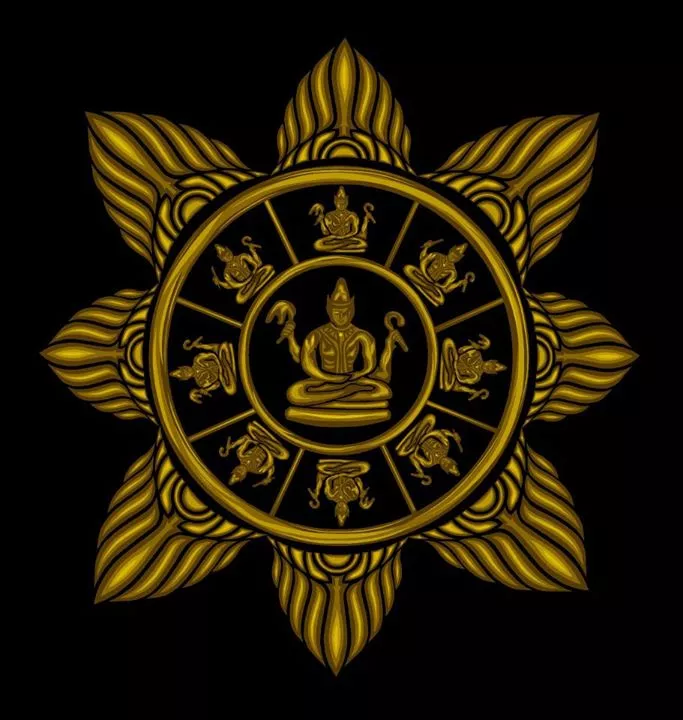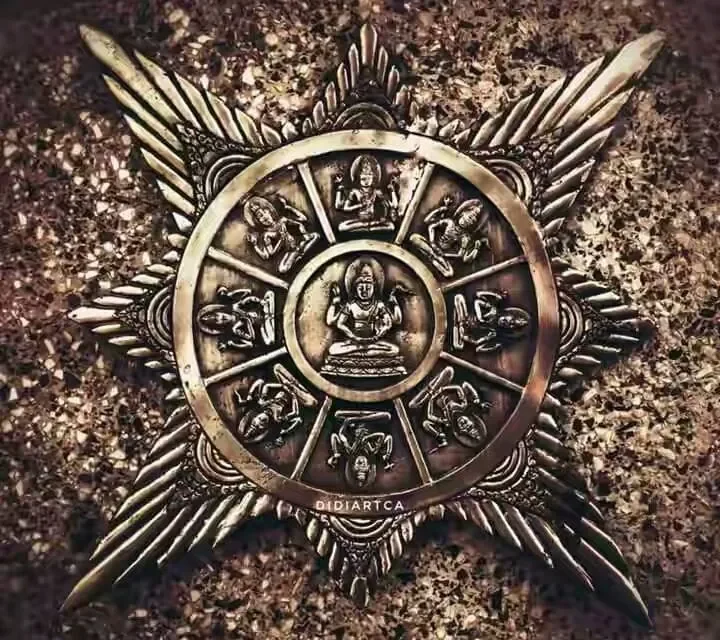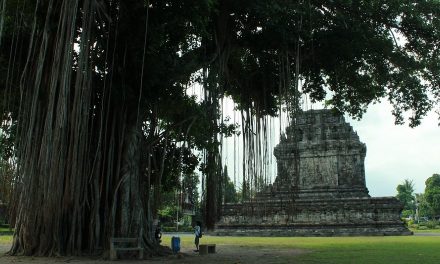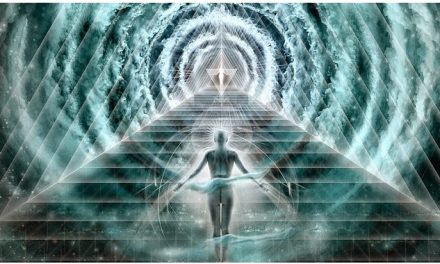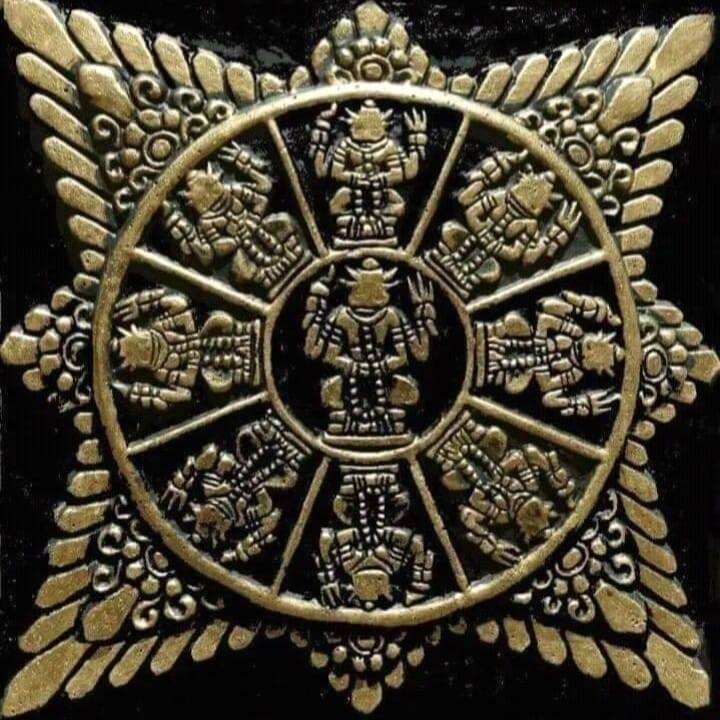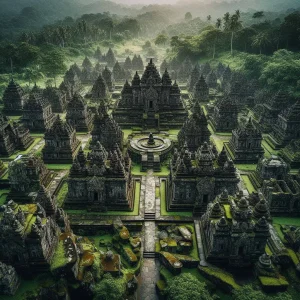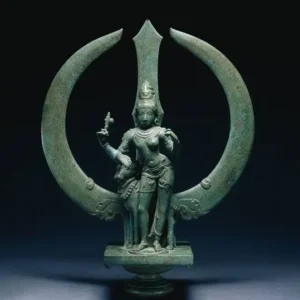Image source — Didi Trowulanesia
The Surya Majapahit is perhaps the most recognizable of all Indonesian symbols.
- It is a cosmological diagram which forms an octagonal mandala
- The Eight Guardians of the Directions (Ashtadikpālas) are placed at the Eight Cardinal Points.
- The Eight Guardians become the Nava-Dikpāla (‘Guardians of the Nine Directions’), or Dewata Nawa Sanga with Shiva in the center.
- When two devas are added for the zenith and nadir, they are known as the Daśa-dikpāla (a group of 10 deities)
- They become eleven (the number of Rudra) when integrated with the layers of Space towards the vertical bottom and vertical top. This correlates to the maximum number of Meru roofs (11) in Balinese temples and the maximum number of waves on Balinese kerises (sacred weapons)
It is a holy symbol that functions as a powerful protection and prosperity talisman.
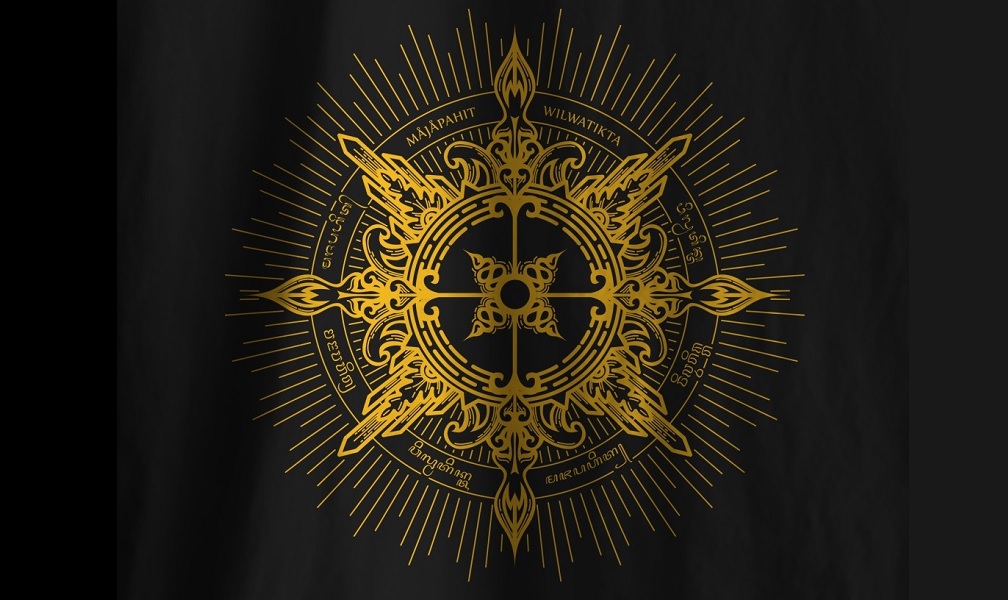
A very powerful design that combines the Dewata Nawa Sanga with the cosmic Indonesian symbol of Kejawen
Lokapāla: Guardians of the Cardinal Directions
- There are eight minor deities, or lokapāla (‘Guardians of the Worlds’) located at the outer rim of the Sun diagram. The lokapāla are the devas who rule the specific directions of space.
- This is also reflected in the esoteric worship of the Ashta Bhairava in Java, Sumatra and Bali.
- The Dewata Nawa Sanga are the Nine deities which occupy the Eight wind directions plus One in the middle.
Each direction of Space is therefore occupied by certain gods along with their colors, weapons, scriptures holy syllable and spiritual functions:
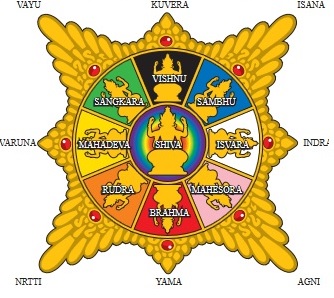
According to the Rudrayāmala, Bhairava is a manifestion of Śiva, who has eight forms who control the eight directions of the universe. The eight forms of Bhairava are: Asitāṅga, Ruru, Caṇḍa, Krodha, Unmatta, Kāpāla, Bhīṣaṇa and Saṃhāra.
Shiva in the Center
In Indonesian Hindu Dharma, the highest principle is Parashiva (God, the Supreme Creator).
The Dewata Nawa Sanga are the manifestations (tattvas) of this highest power, in both Space and Time.
In the center of all of these, Shiva is the highest principle, permeating, preserving and neutralizing the Universe with all its contents.
He is transcendental and immanent. He is both Nirguna and Saguna Brahman (the Absolute, or Cosmic Consciousness).
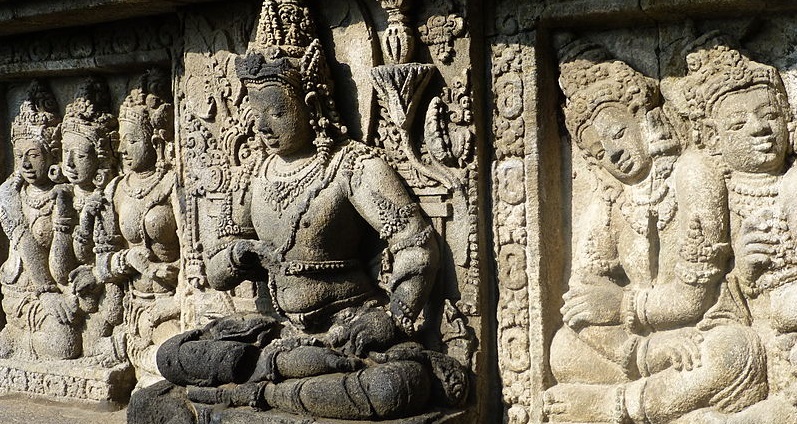
Physical representation of the Lokapāla at the Shiva temple in Prambanan
They are one as the power of God in keeping the balance of the Universe.
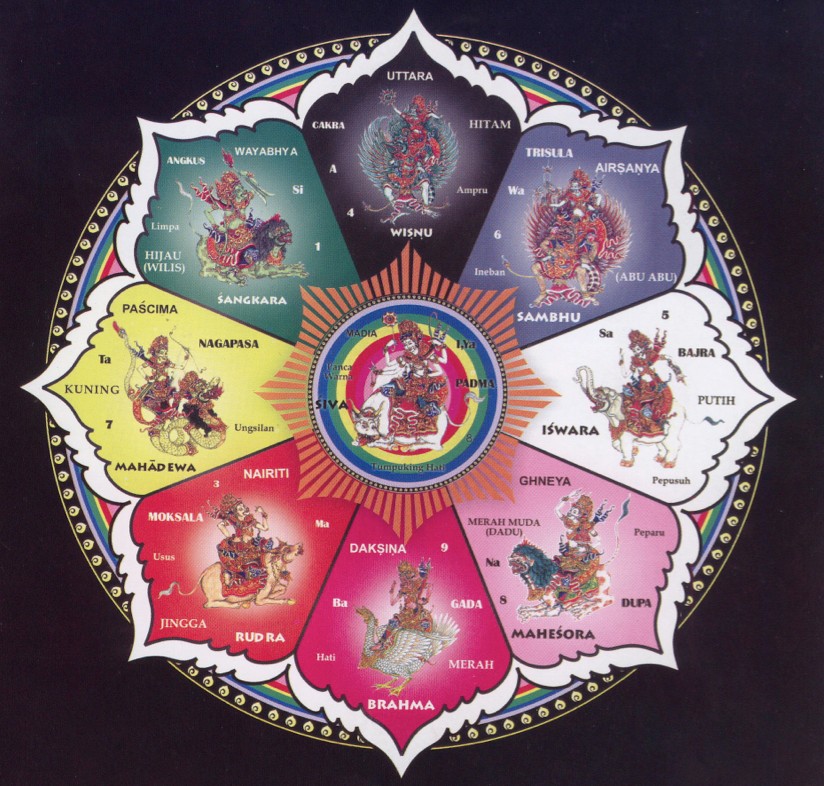
Each deity corresponds to a color, a syllable, an organ in the body, etc in Balinese Shaivism
“Surya Majapahit”
Because of the popularity of this Sun symbol during the Majapahit period, it is nowadays often nicknamed the “Surya Majapahit”.
- It is also seen as the Dharmacakra (‘Wheel of Dharma’)
- It is also related to the Star of Lakshmi, source of the Ashṭalakshmi (‘Eight Forms of Wealth’)
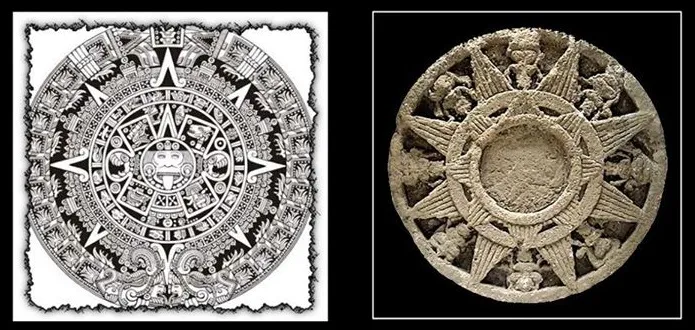
The Dewata Nawa Sanga is one of the mysterious connections between Indonesian and Central American cultures
The Mudra of the Dewata Nawa Sanga
Just as for the Gayatri mantra, there exist the mudra sequence of the Dewata Nawa Sanga
Mudras of the Dewata Nawa Sanga
In temple architecture
The Dewata Nawa Sanga carving is often found on the ceiling of the Garbhagriha of temples.
We can see it in the Bangkal, Sawentar and Jawi temples.
It is sometimes engraved as just a simple eight-pointed Sun ray such as the one set into the ceiling of Candi Penataran.
The carving of Dewata Nawa Sanga is also commonly found on gravestones of the Majapahit era, such as in the Troloyo cemetery in Trowulan.
Its principles are used for the construction of houses and temples, according to the principles of Vaastu Shastra (sacred architecture) in Java and especially in Bali.
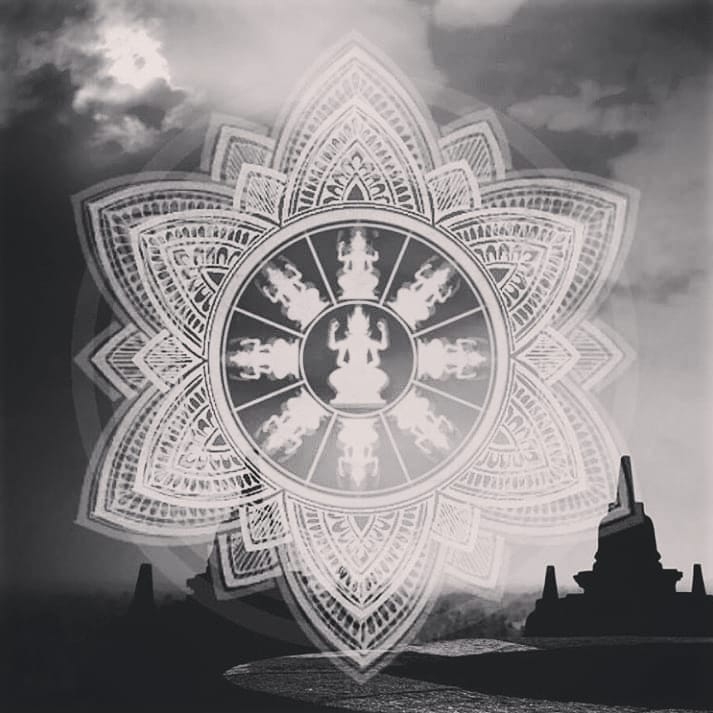
Dewata Nawa Sanga in islam
- The Star of Lakshmi was adopted by the Moslems under the name of “Rub El Hizb”, which is why it is nowadays found on mosques in a much simplified form.
- In Java, the Moslems later twisted the concept into the “Wali Sanga” (a semi-mythical gathering of ‘nine Moslem saints’) in order to replace the worship of the Dewata Nawa Sanga among the Javanese.
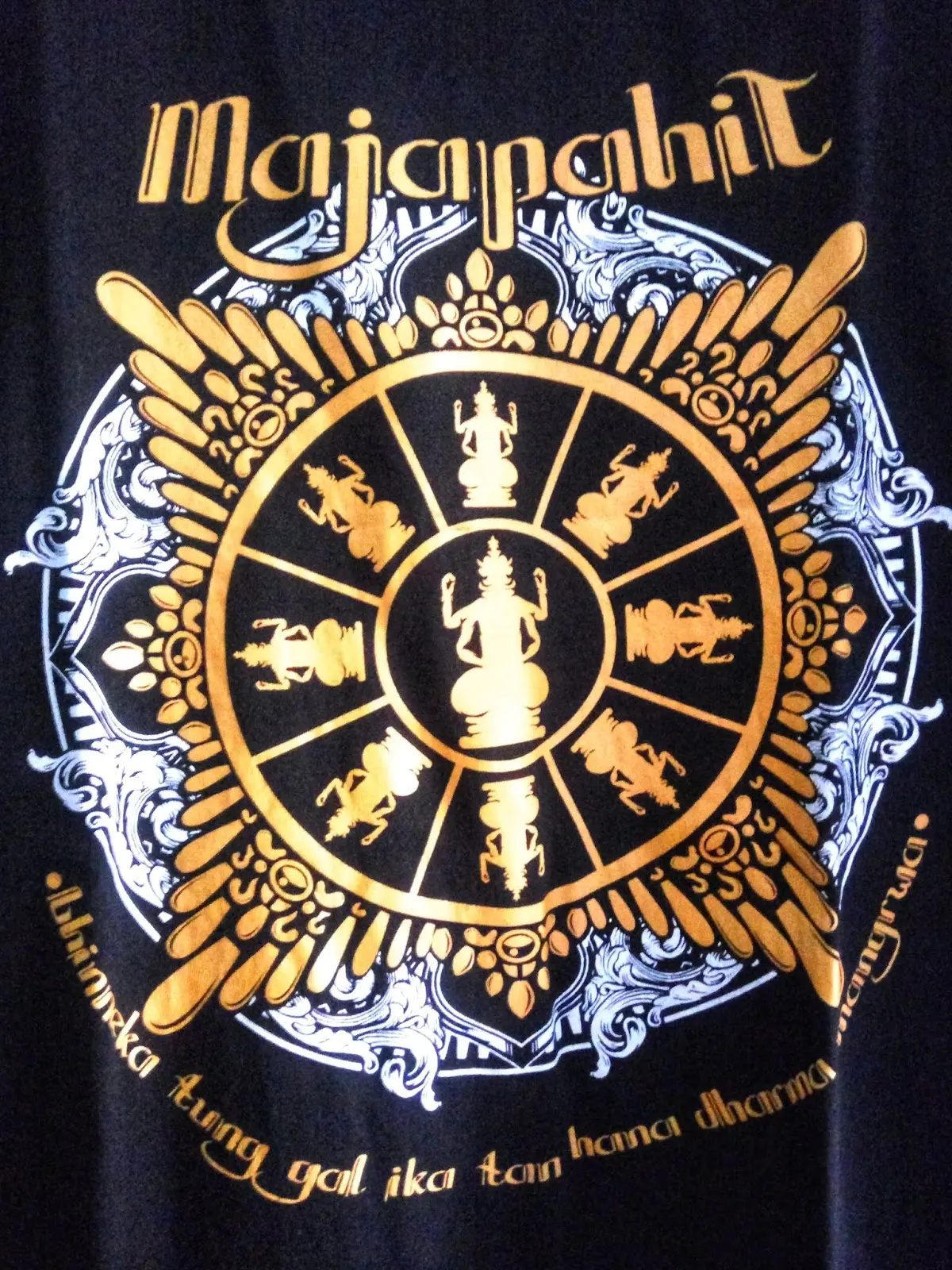
It is very used by the Hindu revivalists in East Java, who have been islamized only 100-150 years ago
